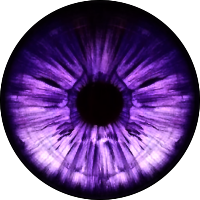+1 (and sorry for the long post) I think to have a proper discussion we need to clarify which "lines" we're talking about, because some users are talking about one type, and some another. First, when there's bright light coming from several different light sources on the walls of a huge room, and the light from none of them reaches the center of the room, the result is this big black "pillar" in the center of the room which doesn't actually exist. The players however see it as a "pillar" because it more-or-less looks identical to a dynamic light barrier. That's the main problem I think, telling a wall apart from from a light edge. This is fixable by adding a "low light" radius to your light source, or just replacing the bright light with low-light altogether. So in this case, we're talking about the "light radius" edge. (fyi: I've noticed that occasionally, even when you add low-light, the sharp radius remains... but I think its just something to do with refreshing the screen because it fixes itself if you move the light source token around a bit to update everything) The second is a "line-of-sight" edge. There's an straight black line formed when a token moves behind a corner or wall or other dynamic light barrier. This is what OP was talking about. I think those should stay relatively sharp because they represent a solid object blocking your view... the fact that we see them on screen as a straight black line is...maybe a bit ugly...but it can't be helped because we're basically forcing 1st person rules of sight onto a 3rd-person overhead view of an area. Those straight black lines are just the result of the disparity in perspective and should be kept mostly the same. A bit of feathering may be in order, but not too much. Secondary would be if the feathering should start before or after the edge of the light, and it looks like people are divided on this. My vote is for feathering before the edge, since you can still kind of "see" what is in the feathered area to some degree. In my mind, the vision limits set by game rules on characters represent the absolute MAXIMUM distance that the character could possibly see, which means that an object just on the edge would be visible... but just barely. The character would be straining their eyes, squinting, that sort of thing, but would still recognize that there was something there. I don't see why the light emitted from objects should work any differently-- the number just sets the absolute MAXIMUM that could be lit up, that doesn't necessarily mean that all of it is lit up WELL. Just my opinion. Last, if you wanted to get really crazy and realistic, you might look into some rudimentary form of ray tracing for bounced light, using dynamic light barriers as the surfaces to bounce excess light off of... this would be more like the real world where light does indeed strike a surface and illuminate things around it (even around corners). This would have to be an optional setting though because I'm sure it would be pretty resource heavy. TL;DR I think the edge formed where a light source ends should be well-feathered (on the inside), but the edges created by line-of-sight should not. Also, implementing basic ray-tracing for light sources as an option would be cool.
























